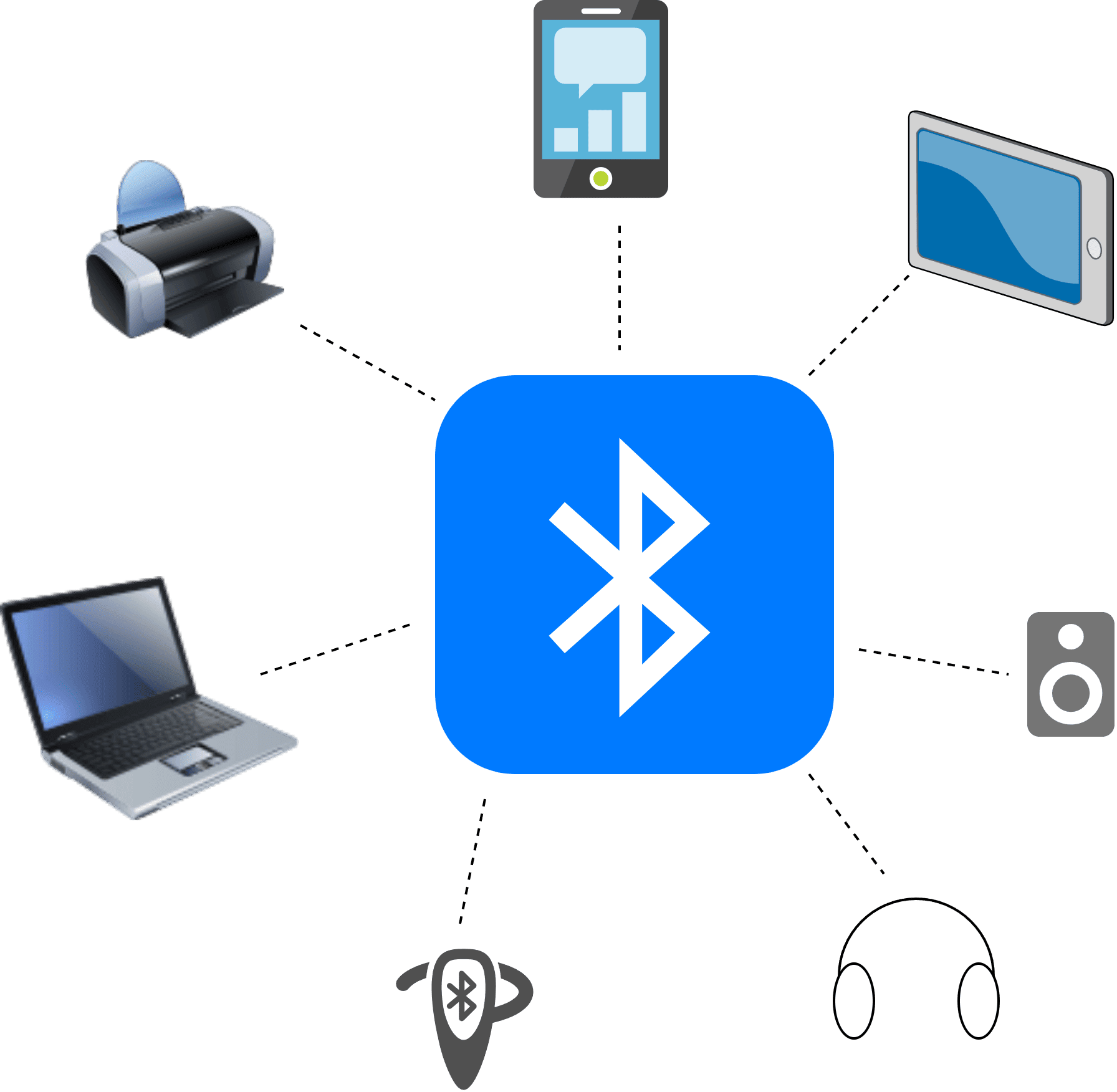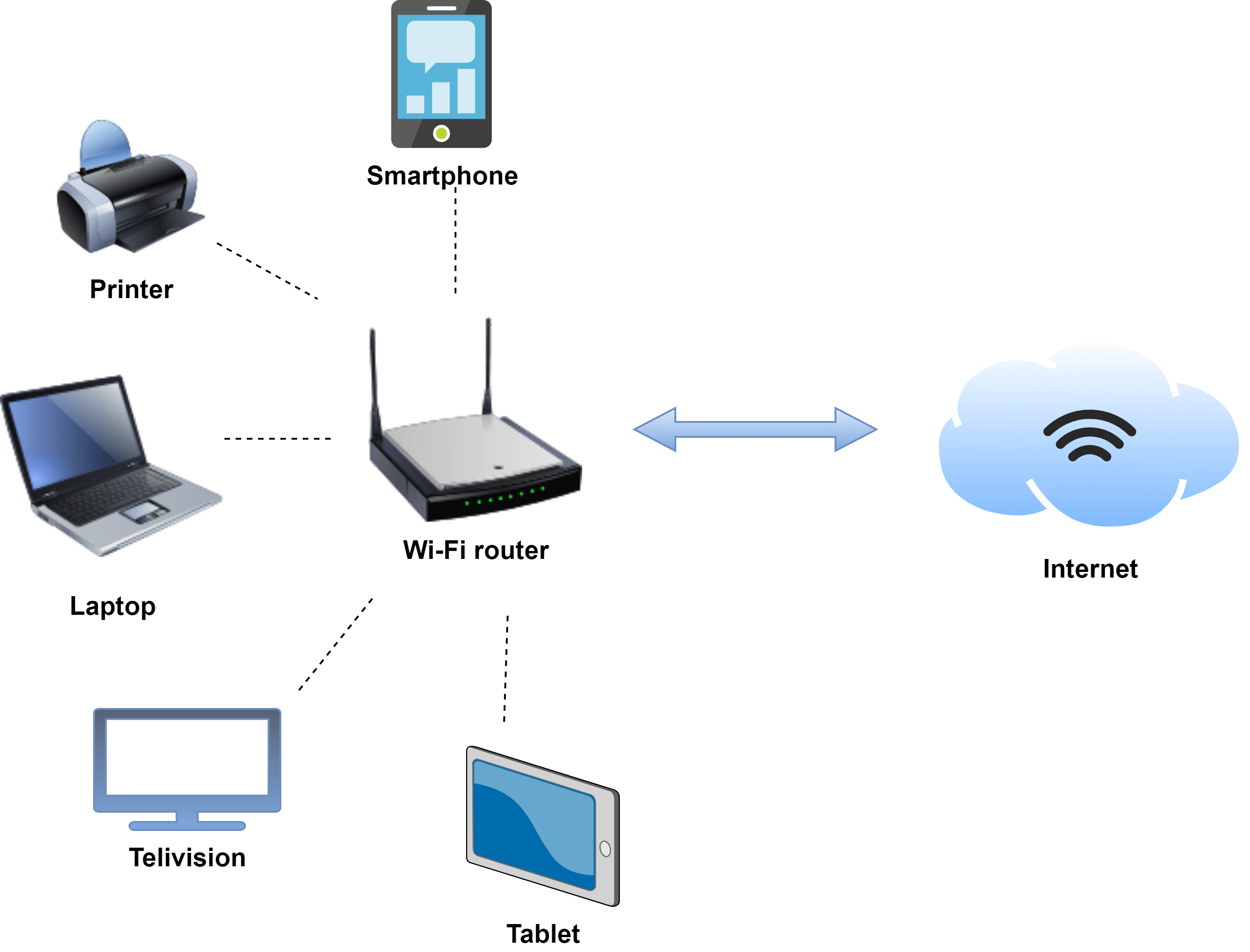1. Overview
In this tutorial, we’ll explore two popular connectivity techniques: Bluetooth and Wi-Fi. Both of these commonly used connectivity techniques allow users to share information over a network.
Furthermore, we’ll discuss the general idea and the differences between them.
2. Bluetooth
Bluetooth allows connecting any two devices, such as computers and mobile phones, which have this feature. Moreover, it uses radio frequency signals to establish the connection between devices. Usually, we can connect devices within a range of 10-100 meters using Bluetooth.
Let’s visualize the Bluetooth connection between devices:
 Additionally, we can use Bluetooth to connect any audio devices, such as speakers, headphones, and external amplifiers. Besides, this allows hands-free control of the audio devices.
Additionally, we can use Bluetooth to connect any audio devices, such as speakers, headphones, and external amplifiers. Besides, this allows hands-free control of the audio devices.
Nowadays, we can see many Bluetooth enables switches, lights, and electronic devices that allow users to access them from a distance.
2.1. Advantages
The main advantage of Bluetooth is that it allows wireless connectivity of devices. Notably, it facilitates sharing files such as text, audio, image, and videos. Further, a line of sight is not required for Bluetooth connection or data sharing between devices.
Additionally, it doesn’t require an external device for connection. As a result, this makes it less expensive and easy to use. Since it doesn’t require an internet connection or additional subscriptions, it’s a cost-efficient option. Further, mobile phones can connect even at locations where there’s no network coverage.
2.2. Disadvantages
Even though Bluetooth has various advantages, it lags in data transfer speed. Mainly, it doesn’t facilitate remote connection. As a result, this constrains the connecting devices to be present in the same place.
3. WiFi
The Wi-Fi allows devices to connect to the internet. Additionally, we use routers that help devices to connect to the internet.
Notably, a router helps as a connecting medium between networks to pass the data packets. The router being part of the OSI model’s network layer, helps in controlling the traffic that prevails in the network.
Let’s visualize the Wi-Fi connection:

Interestingly, some popular Wi-Fi applications are CCTV, Smart TVs, and automatic electronic devices.
3.1. Advantages
Unlike Bluetooth, Wi-Fi allows more than two users to connect simultaneously, providing flexibility. Since the range of connection is high, this includes more users spread across an area to be connected to the network.
Further, the speed of data transfer is high, which makes uploading or downloading of bigger data such as videos quickly.
3.2. Disadvantages
Importantly, we need an additional device, such as the router, for setting up a Wi-Fi connection. Based on the usage and network size, we may need MODEM and switches too. Resultingly, this might have expensive installation costs and usage charges.
Additionally, the speed of the internet may vary based on factors such as location, router brand, and type. Consequently, it also requires a semi-skilled to skilled person for troubleshooting and installation.
Further, the signals are proved to be harmful to a certain extent to infants and pregnant women. Furthermore, the signals also get interrupted by other strong signals from sources such as microwaves.
4. Comparison
Comparatively, let’s understand some of the key differences between Bluetooth and Wi-Fi connectivity:
5. Conclusion
In this tutorial, we discussed the general idea behind Bluetooth and Wi-Fi. Additionally, we presented their key advantages and disadvantages and the difference in characteristics between them.